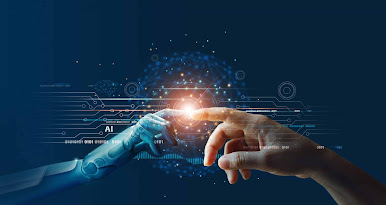What is the future of artificial intelligence?
What is the future of artificial intelligence?
Artificial Intelligence is one such innovation, which has made people think about how we can make machines able to learn as we do with animals. So, if AI gets smarter, it means that humans are getting more intelligent too; making them a bit less human and more machinery. But what exactly is AI? And is it really here yet? Let’s find out!
What is Artificial Intelligence?
Artificial Intelligence (AI) is an area in computer science that focuses on creating machines that can make decisions and solve problems with information gained from the real world through data processing. This involves using algorithms to learn from past experiences without being explicitly programmed. All computers, including those used today, use an algorithm called an instruction set architecture to accomplish specific tasks. For example, when you ask Siri for “What is the weather today” or search for a person using Google, these results are generated based on the keywords that you typed in.
From self-driving cars to facial recognition, many modern inventions rely on AI to make their processes more efficient. While not always useful, AI is essential in almost every modern device we own. It can be seen everywhere these days, from playing video games to sorting emails. With so much work being done on developing AI, it is inevitable that we will eventually build robots that would become more intelligent than us; something very soon.
What Are Some Examples Of Artificial Intelligence Today?
Artificial Intelligence applications are everywhere, from chatbots and voice assistants to image analytics and driverless vehicles. There are already dozens of examples that show how powerful and innovative AI can get. Below, you will see examples of each application.
Chatbots – Chatbots use software that reads text and answers questions posed. These bots can be helpful when you need help and support; for example, a car insurance company might ask a bot to drive you around an unfamiliar town to check if you need a quote. When you answer correctly, the bot provides you with relevant information. Sometimes even better, it may suggest you a nearby service where you can visit and inquire about their services. Asking a question about how it works, you can receive useful tips as well. AI chatbots are becoming increasingly popular because they provide instant responses when users type in general queries. Although they may not be capable of learning anything new and can only repeat what they have been exposed to previously, they do provide answers to commonly asked questions. That said, many companies are still unable to automate chatbot operations due to limitations imposed by the programming languages used. Still, most industries are likely to integrate natural language processing into chatbots moving forward. Automation of processes like this will increase employees’ productivity and decrease costs. Driverless Vehicles – Autonomous driving requires artificial intelligence to ensure that a vehicle has sufficient space, speed, braking, and steering skills to safely navigate all situations without causing harm. Carmakers, such as Tesla and Waymo, are working together to create fully autonomous cars, while others, such as Toyota, are testing automated taxis. Aside from safety, automakers also want drivers to feel safe around automobiles, especially during critical traffic hours, as well as at night. They also use several techniques to improve traffic flow including using sensors placed in intersections and cameras mounted on roads to keep tabs on road conditions and traffic. To make the process safer, it is vital to understand what conditions the car needs to operate within. Many states have laws that regulate autonomous driving, such as Florida, which bans certain types of behavior, including blind driving. However, other countries ban certain kinds of activity, like swerving when there is no room left ahead. Self-Driving Cars – Companies like Alphabet and Waymo began developing semi-autonomous vehicles way back when they were first introduced several years ago. At present, these cars can drive autonomously at speeds between 10–60 MPH while performing various functions, including parking themselves, taking pictures, listening to music, etc. Since 2016, many US cities have ordered driverless vehicles and public transit systems to start operating and offering rides. Advanced technologies like Lidar, radar, and lidar can now be incorporated into these advanced cars and they can detect pedestrians and vehicles along routes ahead and avoid a collision. Recently, these high-tech cars started to test the possibility of having passengers inside as a passenger-friendly option. Because both large trucks and small passenger vehicles, like vans and SUVs, must have enough space to accommodate several passengers, they could potentially change the seating arrangements to fit smaller people. Safety is another issue that is always associated with self-driving cars. Even though accidents are rare, the majority of accidents happen in areas that lack proper roadside infrastructures like emergency exits and signalized road markings. Autonomous trucks and cars provide an alternative, safer approach to managing traffic. Also, self-driving cars often do away with the need for a driver to stay vigilant throughout the day while traveling as much as possible as they are mostly in charge of themselves and most accidents are caused because of careless driving and bad luck that cannot be avoided. This saves time for everyone since there are fewer people needed to oversee traffic so it maximizes fuel efficiency. Machine Learning - ML systems can work alongside or separately from human beings for a variety of tasks including face recognition for security purposes, speech recognition with Alexa, email filtering through Gmail, online shopping recommendations, and more. We use smart devices, such as our phones, laptops, and washing machines, to complete simple daily tasks. We can also train apps to understand our preferences and preferences. Using IoT integration, machines are becoming more aware of their surroundings, detecting issues before they occur. Once they know what we want, they can send messages or ask for our input. However, with so much data accessible, ML systems require massive data volumes to function properly. Unfortunately, it seems impossible to collect as much personal data for ML systems to learn from. Nevertheless, these AI systems continue to improve and offer solutions to address these shortcomings to improve the security and autonomy of devices. Robotics, particularly in manufacturing plants, helps reduce wastage and prevent errors. Robots also cut down on human mistakes when doing repetitive motions. Machines can also handle different tasks in a factory with ease since the robot and tools allow the worker to focus on things that interest them instead of thinking about the details of the task. Smart Cities & Utilities - Smart city projects utilize huge amounts of data for planning and management, as well as monitoring and maintaining water, electricity, transportation, waste collection, sanitation, and security system. Building automation, sensor networks, GPS tracking and mapping, and data analysis are all examples of smart cities that use Big Data. Utility utilities are also looking at AI to provide better energy efficiency and cost savings, which, ultimately, leads to higher utility bills. Another application that uses AI is the construction industry, specifically where equipment is being installed. A lot of machinery can be replaced by sensors, which use visual features to determine if they are free of cracks, creases, or defects. On larger structures, it might ever take place remotely.
What Changes Will Come To Artificial Intelligence Next?
There have been rumors that IBM is experimenting with Watson assistant; a program meant to develop a conversation with any user or group of people without having to tell them what to do. However, with Watson, there is no direct interface with the client. Instead, employees have a command menu that allows them to define their rules and give commands to the system. According to Bloomberg News, when you tell it to open Wikipedia, for example, it doesn’t know what kind of article you want it to read.
When we talk about AI, it is easy to get caught up in its potential benefits. Especially from a sociological perspective, it can be argued that AI is inherently good if we let it develop in the same way that humans do. After all, we are humans and most of us are quite similar in terms of thinking, problem-solving, motivation, and motivation. Therefore, it makes sense that AI should follow suit and evolve in a similar manner so that we don’t lose sight of why we are building it in the first place – we are trying to get to grips with machines and make them better. Now, it would be best to look at where we are at right now, examining where we are headed and seeing where current research is heading. Hopefully, we will find the solution to this conundrum







Comments
Post a Comment